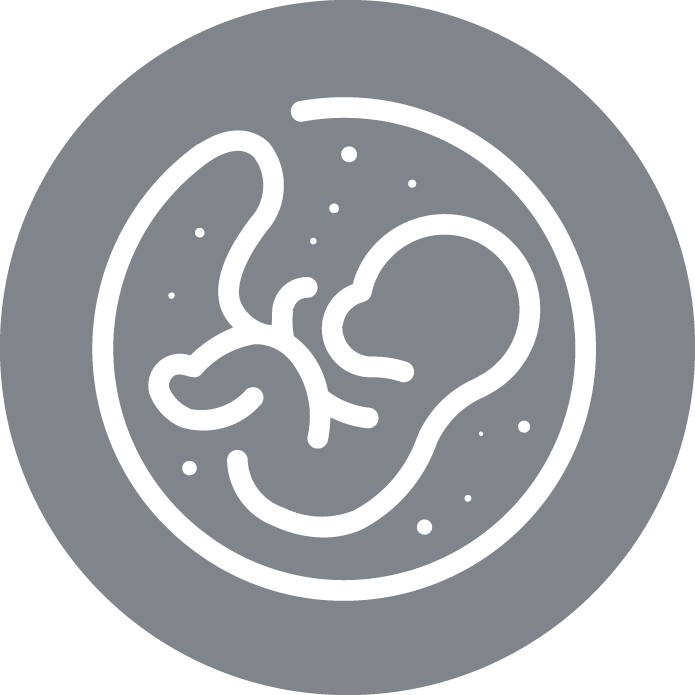“The objective evaluation and improvement of oocyte quality is one of embryology’s upcoming challenges,” Cristina Rodriguez
Cristina Rodríguez, a researcher at IVI Valencia, left Galicia where she trained as a biologist to further her education in assisted reproduction. She is currently completing her PhD on in vitro oocyte maturation and the improvement of oocyte quality, under the tutelage of Dr. Elena Labarta and Dr. Ernesto Bosch.
With her broad area of expertise, Cristina Rodríguez contributes to a multitude of ongoing projects. As an active investigator, she is involved in both IVF laboratory projects and others related to pre-treatment gynecological work. On this occasion, we asked her to explain why she chose the topic of her thesis.
In this interview, the researcher explains that there is still much progress to be made in the improvement and evaluation of oocyte quality. In Cristina's words: "it is still a rather unknown field, in comparison with other branches of embryology. Evaluating oocyte quality in the laboratory is, to a certain extent, subjective. An understanding of the cytoplasmic maturation process will enable us to develop new approaches that can improve oocyte quality and, therefore, reproductive success. And this is one of embryology's upcoming challenges.”
How did you discover reproductive medicine?
It came to me both by chance and intuition. During the last year of my degree, I had not yet decided what I wanted to do given such a wide range of options. Assisted reproduction was a subject that we had barely addressed, but it caught my attention as soon as I looked into it. After attending several courses organized by IVI Vigo, I discovered that I really liked it, and I applied for the Master's Degree in Biotechnology of Assisted Human Reproduction at the University of Valencia.
What is in vitro oocyte maturation?
In vitro oocyte maturation consists of carrying out the last step of oocyte maturation in vitro in an IVF laboratory, rather than in vivo in the intraovarian follicular environment. The latter is what occurs naturally in every menstrual cycle or after a conventional ovarian stimulation cycle.
In vivo ovulation induction triggers a series of processes in the cumulus-oocyte complex that lead to oocyte maturation, both nuclear and cytoplasmic. This is how the ovulated oocyte is prepared for fertilization. With in vitro maturation, this last step is carried out by culturing the still immature oocytes in special culture media supplemented with various hormones and substances that mimic the in vivo environment.
Immature oocytes that are suitable for in vitro maturation can come from conventional ovarian stimulation cycles that have failed to complete the in vivo maturation process. However, the specific immature oocytes that I work with come from cycles of gentle stimulation without administration of any ovulation trigger.
Why did you choose this research topic?
Oocyte quality assessment and improvement is still a rather unknown field compared to many other branches of embryology. Evaluating oocyte quality in the laboratory is conducted somewhat subjectively. The only possible objectivity is the visualization of nuclear maturation. In other words, the extrusion of the first polar corpuscle and the absence of a nuclear membrane. However, assessing cytoplasmic quality is much more subjective and there are no clear criteria for doing so.
The problem is that cytoplasmic maturation is just as important as nuclear maturation and today we have no way of knowing whether a nuclear mature oocyte is also cytoplasmically mature before being fertilized.
Understanding the process of cytoplasmic maturation will enable us to adopt new approaches to improve oocyte quality and, therefore, reproductive success. And this is one of the next challenges of embryology.
What is your hypothesis?
First of all, we are trying to optimize the technique of oocyte maturation in vitro of oocytes from normo-ovulating women after a cycle of gentle ovarian stimulation without administering any type of ovulation trigger in vivo.
For this purpose, we are basing our protocols on the ones previously published by other groups in women with polycystic ovary syndrome, the most studied reference population using this technique. Women with this syndrome produce a large number of smaller follicles, i.e., immature follicles, making them the ideal population for in vitro maturation. However, in the case of normo-ovulating women, there must be a correct development of a sufficient number of follicles, without reaching the natural phenomenon of follicular dominance, which will result in the atresia of the rest of the cohort.
To achieve this, we have to adapt the existing protocols found in the literature to our study population and modify them based on our own experience using this technique.
Once we have perfected the protocol to recover immature oocytes in this type of women, and their correct in vitro maturation, we hope to have a technique to obtain oocytes at an immature stage prior to the completion of meiosis I, a key step in the oocyte maturation process.
By studying the maturation process, we can improve oocyte quality in oocytes from normo-ovulating women, who make up a high percentage of the patients we see in our clinic.
What impact will the findings of this research have on reproductive treatment?
In the future, this technique may be offered as a cheaper and more convenient option for women who prioritize economic and practical benefits over obtaining a greater number of viable oocytes available for treatment. Keep in mind that the patients will not be prescribed any medication.
In addition, this option is also very promising for women with resistance to hormones administered during ovarian stimulation or who suffer from hormone-dependent cancers.
We are currently experiencing the incorporation and rapid adaptation of new technologies in the laboratory. And the same is happening with new techniques, as is the case of in vitro oocyte maturation.
Do you think we are nearing the end of egg donation?
At present, unfortunately, I do not see the end of egg donation as near. Improving oocyte quality, especially in older patients, is a difficult and very ambitious goal to achieve.
Despite our progress, we cannot fight against nature itself. However, I do believe that there is still a lot of research and discovery to be done. I hope that one day we will manage to increase, even slightly, the chances of success in these cases of poor oocyte quality. In this way, fewer women will need egg donation and instead will have a better chance of achieving a pregnancy with their own oocytes.



